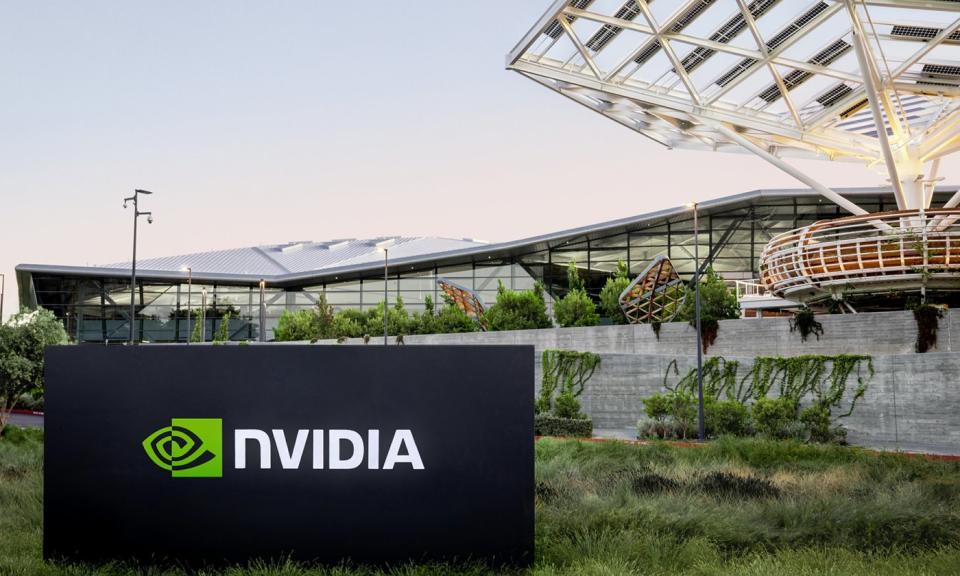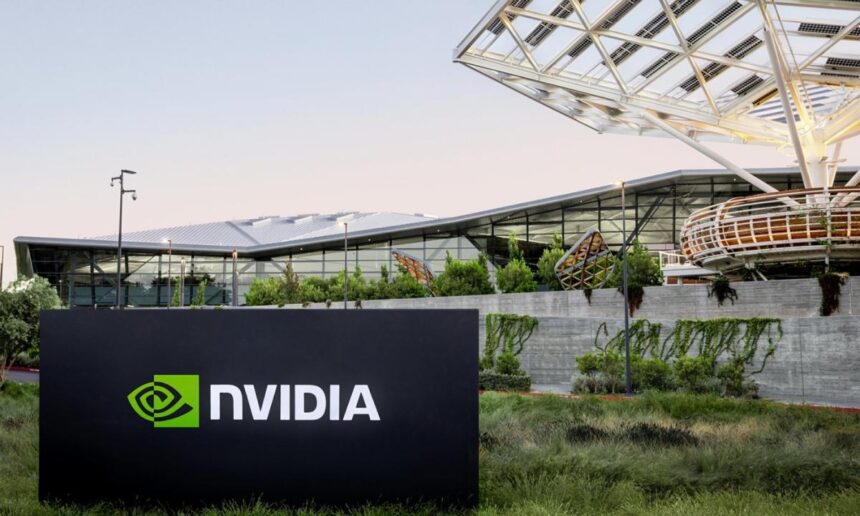Larry Ellison owns 42% of Oracle (NYSE: ORCL)a $465 billion tech giant that is building some of the most powerful data centers for artificial intelligence (AI) development.
Nvidia (NASDAQ: NVDA) provides Oracle and most other technology companies with data center chips called graphics processing units (GPUs). Nvidia has seen revenue growth over the past year, and demand for GPUs continues to outstrip supply. However, some investors are beginning to question how long it will take Oracle and its peers to spend billions of dollars on the chip giant to fuel its AI aspirations.
Concerns that the AI train may be starting to lose steam are the main reason Nvidia shares are selling down 14.5% from their highs. But the market may have missed comments this month from Ellison at Oracle’s financial analyst meeting that offered better news for Nvidia investors.
Oracle is nowhere near its AI infrastructure targets
Oracle data centers are unique in that they are automated. Each of them is operational, regardless of size, and because they do not require human labor, companies can build quickly. In addition, Oracle’s RDMA (random direct memory access) GPU networking technology allows data to flow from point to point much faster than traditional Ethernet networks.
Because most AI developers pay for computing capacity by the minute, Oracle’s data center can save significant costs compared to competing infrastructures. That’s why demand is rising from leading AI startups like OpenAI, Cohere, and xAI. Oracle has 85 data centers up and running with another 77 under construction as of fiscal 2025 first quarter (ending August 31), but Ellison thinks that it can operate as many as 2,000 in the long term.
Next year, Oracle plans to offer a cluster of 131,072 GPUs, which is a big step up from the current largest cluster, around 32,000 GPUs. But there is another difference: The new cluster will use Nvidia’s latest Blackwell chips, which can perform AI inference at 30 times the speed of the flagship H100, which Oracle currently uses. Theoretically, this would allow developers to create the largest AI models in history.
This will greatly benefit Nvidia. It generated data center revenue of $26.3 billion during the fiscal 2025 second quarter (ended July 28) mainly from GPU sales, which increased 154% from the period last year. The rate of growth slowed compared to the previous quarter as the number grew, but Nvidia’s customers showed no signs of slowing down.
In fact, Oracle is spending $6.9 billion on data center infrastructure in fiscal 2024, and plans to double that figure is in fiscal 2025. But it gets better.
Ellison’s latest comments are good news for Nvidia
During the analyst meeting, Ellison told the audience about the dinner he organized Tesla CEO (and founder of xAI) Elon Musk and Nvidia CEO Jensen Huang at Nobu in Palo Alto. He remembers himself and Musk begging Huang for other GPUs:
Please take our money… take more of it. You don’t take enough. … We need you to take more of our money. Please.
– Ellison and Musk’s comments to Jensen Huang during dinner, according to Ellison.
Oracle Cloud Infrastructure (OCI) generated revenue of $2.2 billion during Q1 (primarily from leasing data center capacity to customers), which is a 46% increase from the year-ago period. However, Oracle ended the quarter with a record $99 billion in remaining performance obligations (RPO), an increase of 53%. The company said it signed 42 new deals for GPU capacity worth $3 billion during Q1, which contributed to the backlog.
Oracle can’t serve all those AI developers — or turn RPO into revenue — until it brings more data centers online, so Ellison asked Huang for more GPUs.
Tesla is in a similar position. It is fighting for supremacy in the autonomous driving software industry, and is trying to bring a cluster of 50,000 GPUs online later this year to train AI models. Tesla will spend $10 billion on the infrastructure, but it needs more capacity.

Now could be a good time to buy Nvidia stock
Oracle and Tesla aren’t the only companies spending big on data centers. Microsoft spent $55.7 billion on capital expenditures (capex) mostly related to AI infrastructure during fiscal year 2024 (ending June 30), and plans to spend more in fiscal year 2025. Additionally, AmazonCapex spending is on track to top $60 billion this calendar year.
Based on Nvidia’s trailing 12-month earnings per share of $2.20, the stock is trading at a price-to-earnings (P/E) ratio of 52.7. That’s expensive compared to the 30.9 P/E ratio of Nasdaq-100 technology index, which hosts many of Nvidia’s big tech friends.
However, Nvidia’s fiscal 2026 will begin at the end of January 2025, and Wall Street expects the company to earn $4.02 per share for the year. That puts the stock at a forward P/E ratio of just 28.8. In other words, investors who are willing to hold Nvidia shares for at least the next year and a half can scoop up a bargain at the current price – assuming Wall Street forecasts prove accurate.
A slowdown in Nvidia’s business will eventually come because the magnitude of AI spending now will be very difficult to maintain in the long term. Additionally, competition is slowly coming online in the GPU space, which could erode some of the company’s market share over the next few years.
However, based on the current reality, Nvidia stock may be a good buy at the current price. Determined AI spending from some of our largest customers suggests that a slowdown is not on the immediate horizon.
Should you invest $1,000 in Nvidia right now?
Before buying shares in Nvidia, consider this:
At Motley Fool Stock Advisor The team of analysts only recognized what they believed it to be 10 best stocks to buy investors now… and Nvidia is not one of them. 10 stocks that made the cut could produce monster returns in the coming years.
Try when Nvidia created this list on April 15, 2005… if you invest $1,000 when you recommend, you will have $712,454!*
Stock Advisor gives investors an easy-to-follow blueprint for success, including portfolio-building guidance, regular updates from analysts, and two new stock picks every month. At Stock Advisor service already more than four return of the S&P 500 since 2002*.
View 10 stocks »
* Stock Advisor returns on September 23, 2024
John Mackey, former CEO of Whole Foods Market, an Amazon subsidiary, is a member of The Motley Fool’s board of directors. Anthony Di Pizio has no position in any of the stocks mentioned. The Motley Fool has positions and recommends Amazon, Microsoft, Nvidia, Oracle, and Tesla. The Motley Fool recommends the following options: long January 2026 $395 calls on Microsoft and short January 2026 $405 calls on Microsoft. The Motley Fool has a disclosure policy.
Oracle Founder Larry Ellison Just Delivered Fantastic News to Nvidia Stock Investors was originally published by The Motley Fool




